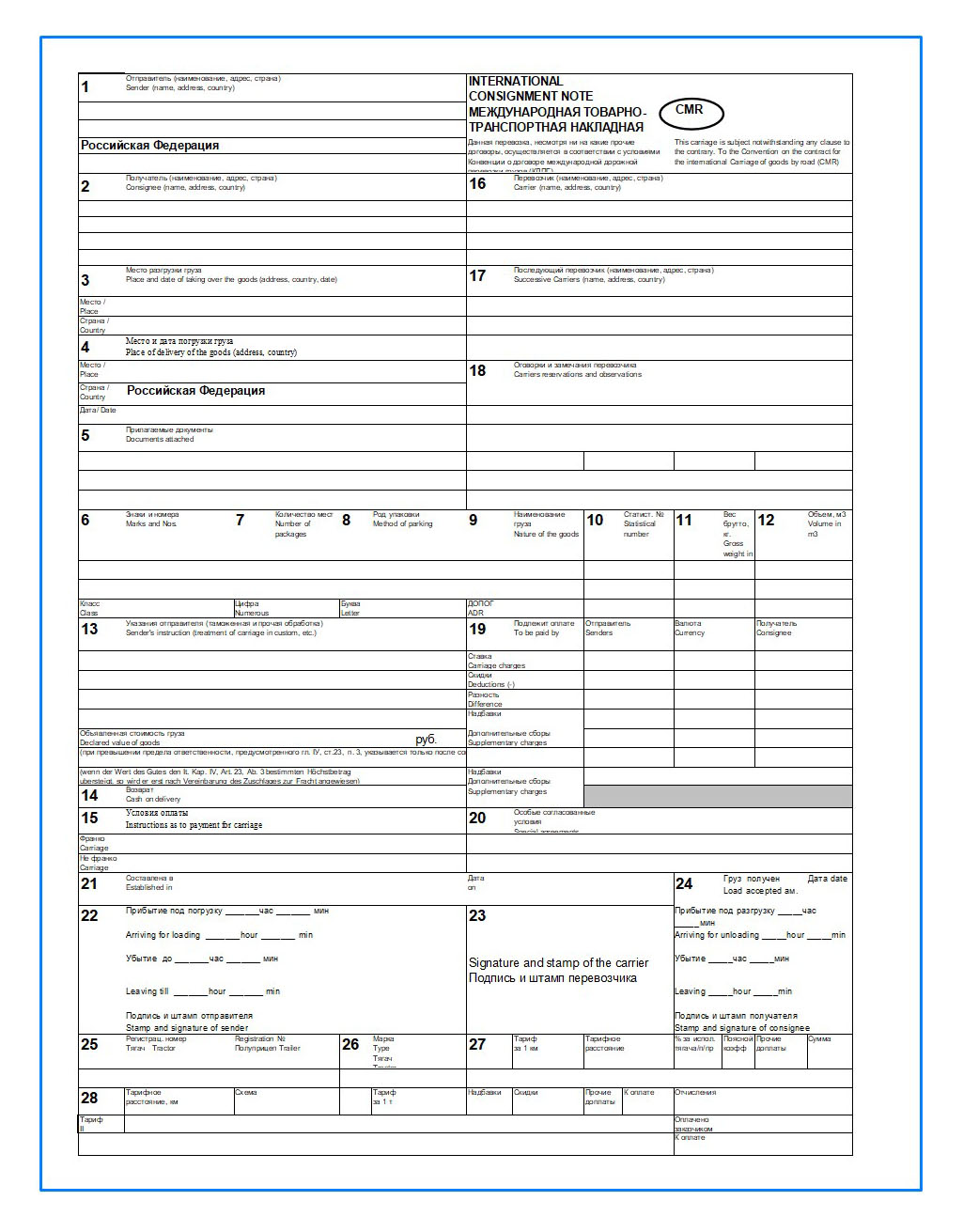
CMR
CMR is an international agreement for the carriage of goods by road. A CMR Waybill is similar to a Bill of Lading in that it confirms that the Carrier has received the goods and that a contract of carriage exists between the Shipper and the Carrier.
What is the CMR invoice used for?
The CMR contains a lot of important information that is agreed upon between the sender and the transport company or carrier. This document clearly defines the responsibilities of both parties and forms an agreement between the sender and the transport company, and also details the responsibilities and conditions of transportation.
A CMR bill of lading does not give its holder or carrier any ownership rights to the goods. By documenting the responsibilities of both parties, a CMR will help provide protection if an item is damaged or lost during transit.
What information is contained in the CMR consignment note?
It is important that the shipper provides complete information to complete the CMR to avoid any problems or delays in the transportation process. The CMR should usually contain the following:
- Information about the sender (exporter) – company name, address, telephone numbers.
- Information about the consignee (importer) – company name, address, telephone numbers.
- Place of delivery of goods (city, country)
- Place and date of acceptance of the goods (address, date)
- Attached Documents – any additional documentation supplied with the delivery. It is important to include a commercial invoice, packing list and certificate of origin.
- Product and packaging details including:
- Marks and numbers
- Number of packages
- Packing method
- Nature of the goods
- Statistical number
- Total weight (kg)
- Volume (m3)
- Product class
- Shipper’s instructions – any additional instructions associated with the shipment, such as information about customs clearance, insurance, etc.
- Freight Payment Instructions – Confirmation that freight has been paid or is payable.
- Cash on delivery is the amount that the Consignee must pay to the carrier at the point of delivery.
- Carrier Information – This includes the company’s basic contact information, including company name, address, telephone numbers.
- Carrier’s reservations and comments – This section may be completed by the carrier. They can add any notes regarding any observations or problems upon receiving the item. Any information added to this section must be accepted and signed by the Sender (exporter).
- Special Agreements (if applicable) – any additional information agreed upon between the Sender and the Carrier of the goods must be added to this section. This may include information such as contractual obligations, delivery details.
- Paid by: Sender, Consignee – the amount of each payment that will be covered by the Sender or Consignee, indicating the currency for each payment. Both amounts will be summed up at the bottom of the “Total Payable” field.
- Conclusion date – the date of conclusion and signing of the contract.
- Sender’s signature and stamp
- Signature and seal of the carrier – the signature and seal of the cargo carrier, as well as the license plate of the vehicle.
- Signature and seal of the consignee – Signature and seal of the consignee (upon receipt of goods)
How many copies of the CMR consignment note are required?
There are usually 4 copies of the CMR invoice:
- Copy for sender
- Copy for carrier
- Copy for the recipient (which accompanies the goods to the final destination)
- Copy for administration

